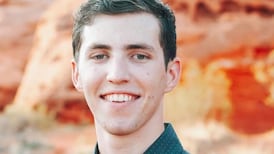If you ever puzzled over the wavy black lines in a settling pint of stout or wondered what mathematics has to do with preventing a barbecued hamburger from burning, then the answers will soon be on the way thanks to a major investment in Irish mathematics research.
Science Foundation Ireland this week has announced research funding worth €7.84 million under its Mathematics Inititative for two research programmes.
The University of Limerick has been selected to head a national mathematics initiative involving a number of universities, with funding worth €4.43 million. And NUI Maynooth will receive a €3.5 million grant over five years to establish a collaboration between researchers from UCD, UCC and DCU and Maynooth's Claude Shannon Institute for Discrete Mathematics, Coding and Cryptography, headed by Dr Gary McGuire,
It will create an infrastructure for mathematicians, engineers, computer scientists and business to work together to tackle the mathematical problems facing the communications industry.
The awards are meant to encourage mathematicians to work closely with researchers from industry, finance, economics, engineering and other academic disciplines.
This is an exceptional award, particularly because the focus is on applied rather than pure mathematics, suggests professor of applied maths Prof Stephen O'Brien, who will head the UL group known as Macsi, Mathematics Applications Consortium for Science and Industry (www.macsi.ul.ie).
The award will be used to support a wide range of research projects undertaken by maths departments across the State, he said. Typically these will also involve industrial partners with problems that can be solved using mathematical models created using applied maths techniques.
"They all have to be cross-institutional," says O'Brien, but there is no shortage of participants. There are already about 10 companies signed up to participate including Analog Devices, Diageo, Waterford Crystal, Dell Computers, Boston Scientific and others. There has also been a dearth of funding for applied maths as opposed to pure maths research so applied specialists will be anxious to take part.
The great advantage of funding this kind of mathematics research is that it doesn't require labs, special buildings or expensive equipment. "The money goes on research personnel, predominately post-graduates and post-docs," O'Brien says.
The problem solving potential of applied maths is staggering. The moving black lines seen in settling stout can be modelled using maths and the results of the analysis can also be used to describe "roll-waves", the wavy lines pf water that form on footpaths when it rains. It can be used in a variety of fields, from the pricing of stock options to the coating of fluorescent light-bulbs or in describing the dripping of wet paint from a ceiling.
O'Brien referenced the medical devices called stents produced by Boston Scientific. These metal wires are coated with polymers and then drugs before insertion in a patient.
"They need to understand the basic transport mechanisms of the device, for example how thick the drug-coating is. To understand problems like this you can develop mathematical models. Maths broadly speaking looks for patterns where patterns may not be evident," he explains.This type of industrial mathematics is well developed in Britain and the UL initiative will be modelled on one at Oxford, the Centre for Industrial and Applied Mathematics, he adds.
It will engage with real world problems that need answers and so will have very ready and practical outlet, O'Brien says. These can emerge in science, engineering and industry. "Mathematical modellers perceive themselves as being scientists as well as mathematicians and are interested in other disciplines apart from mathematics," he states. "Without this philosophy, most modern technology would not exist; aeroplanes would not fly, man would not have reached the moon, there would be no scientific weather forecasts."







